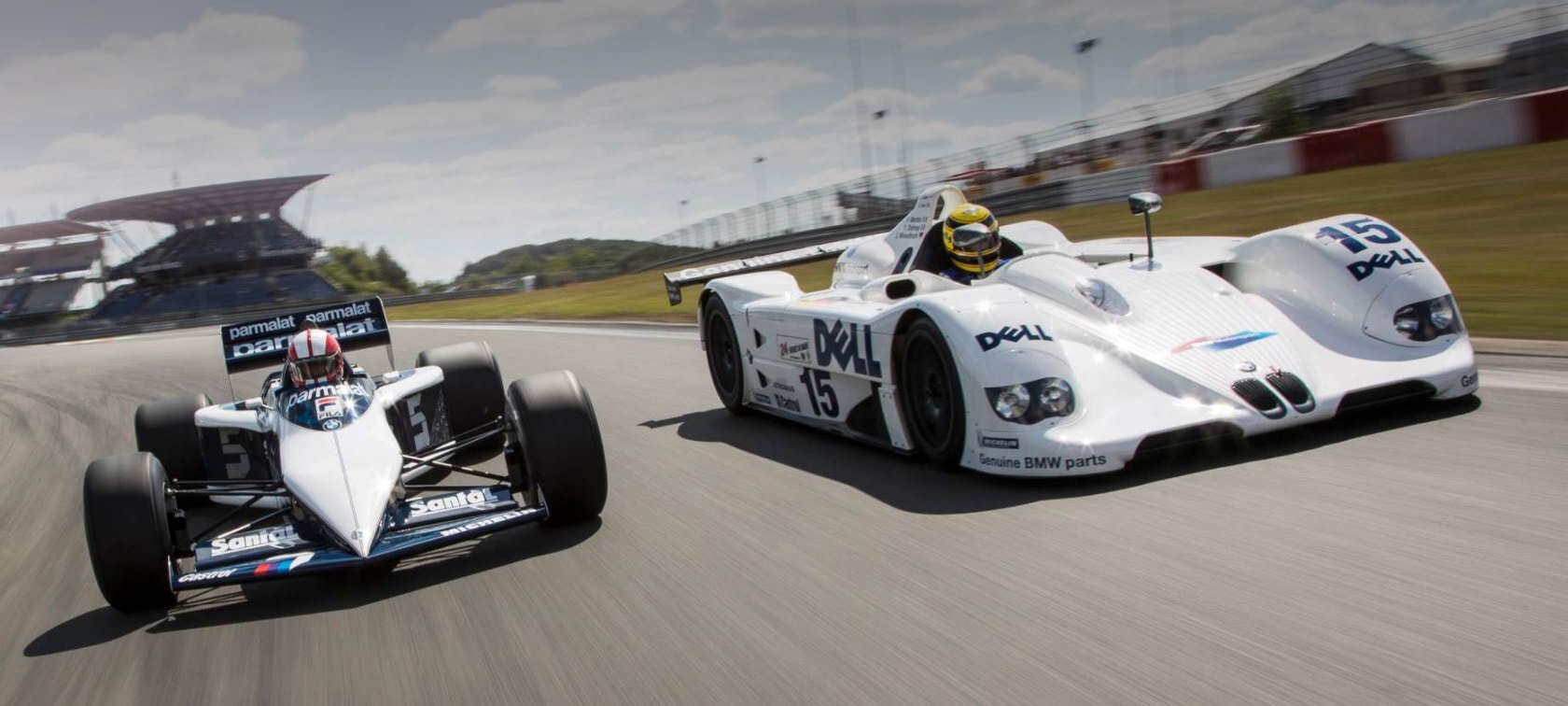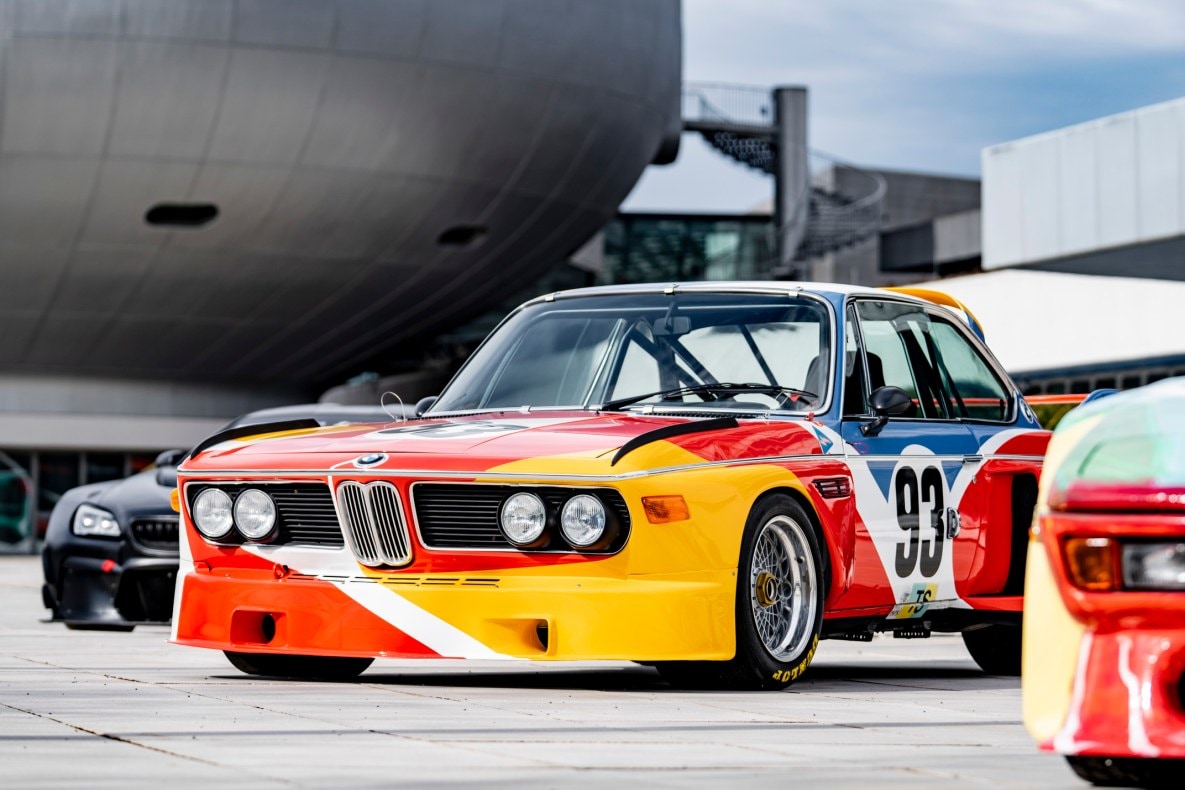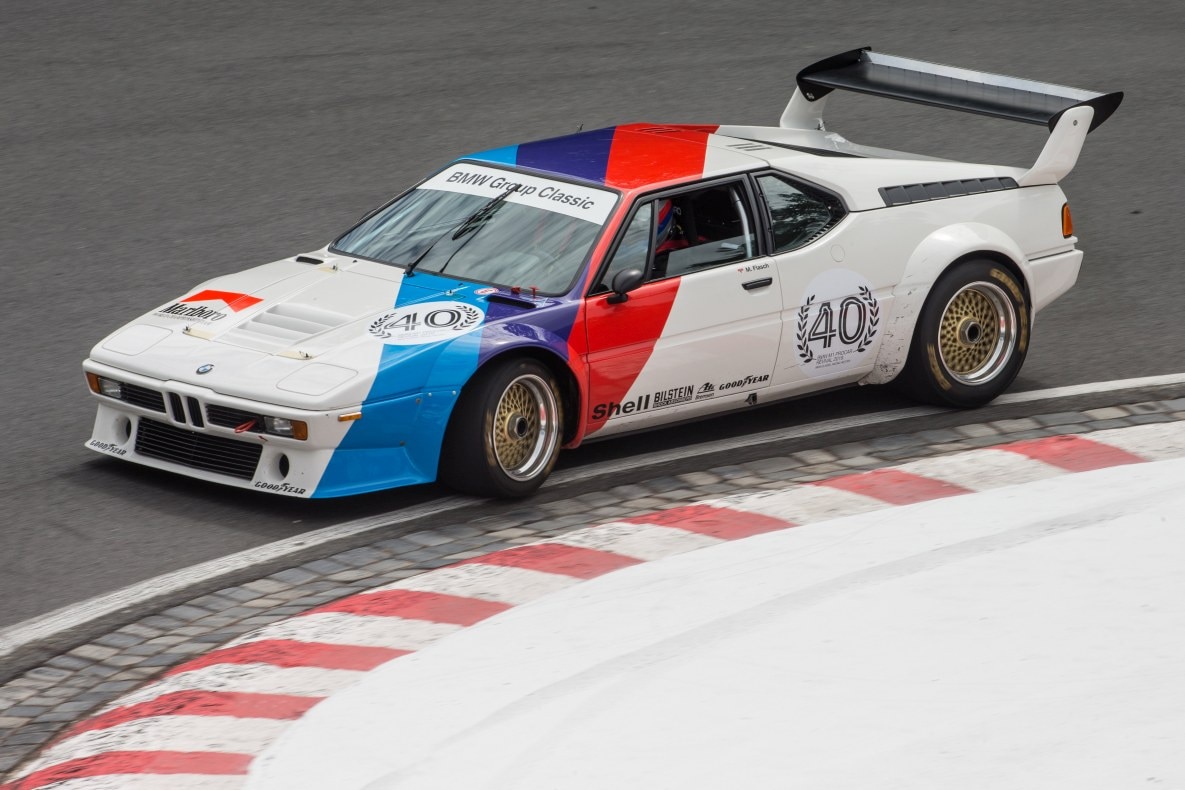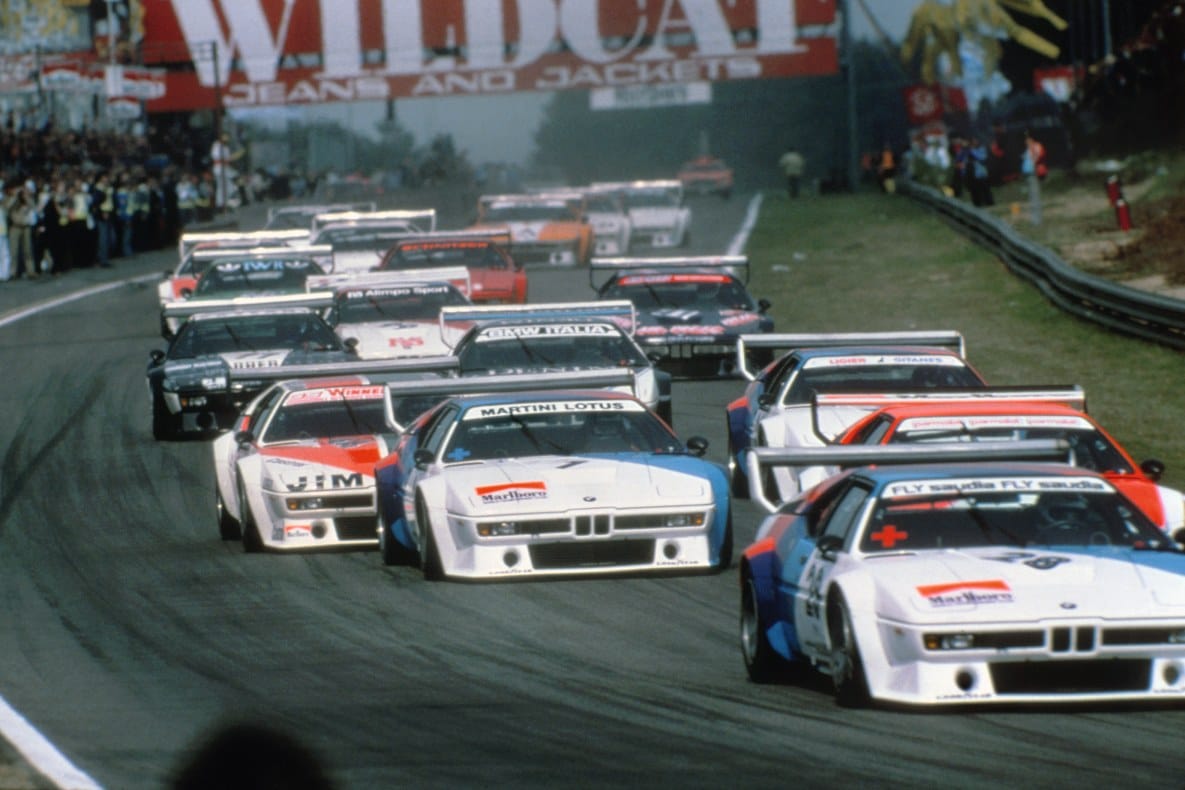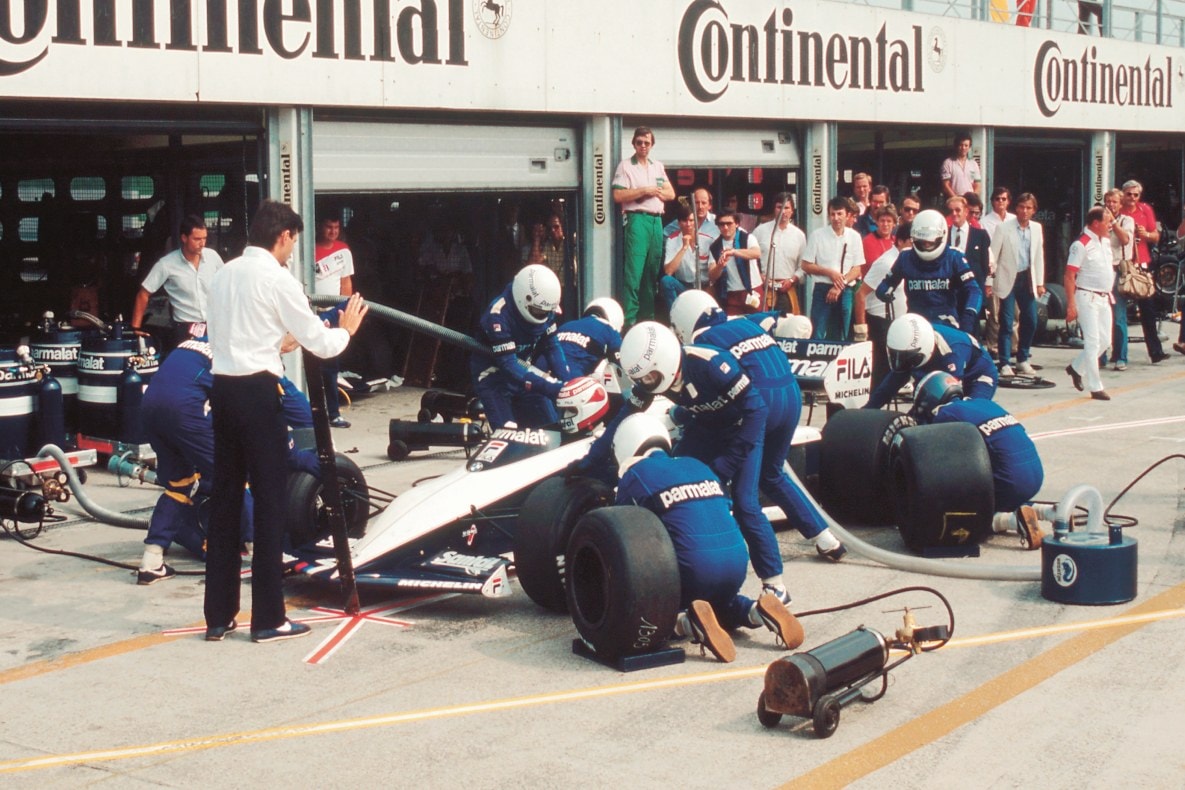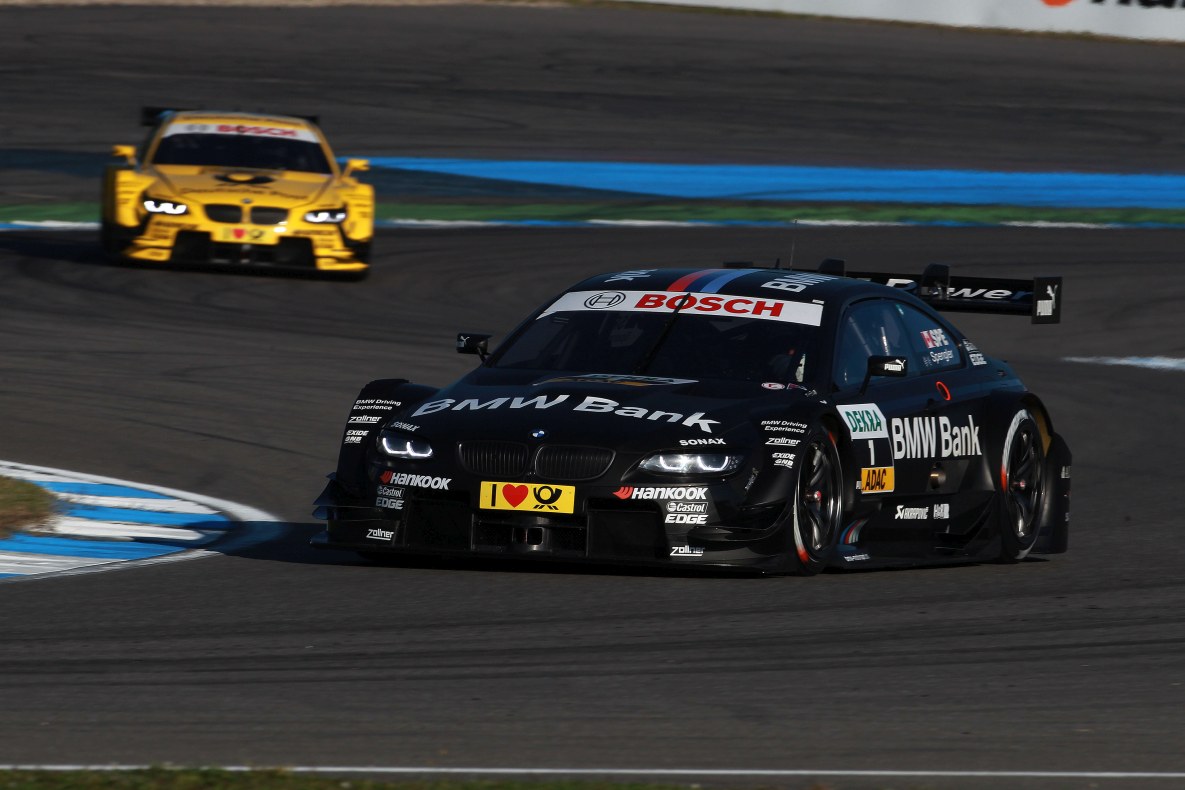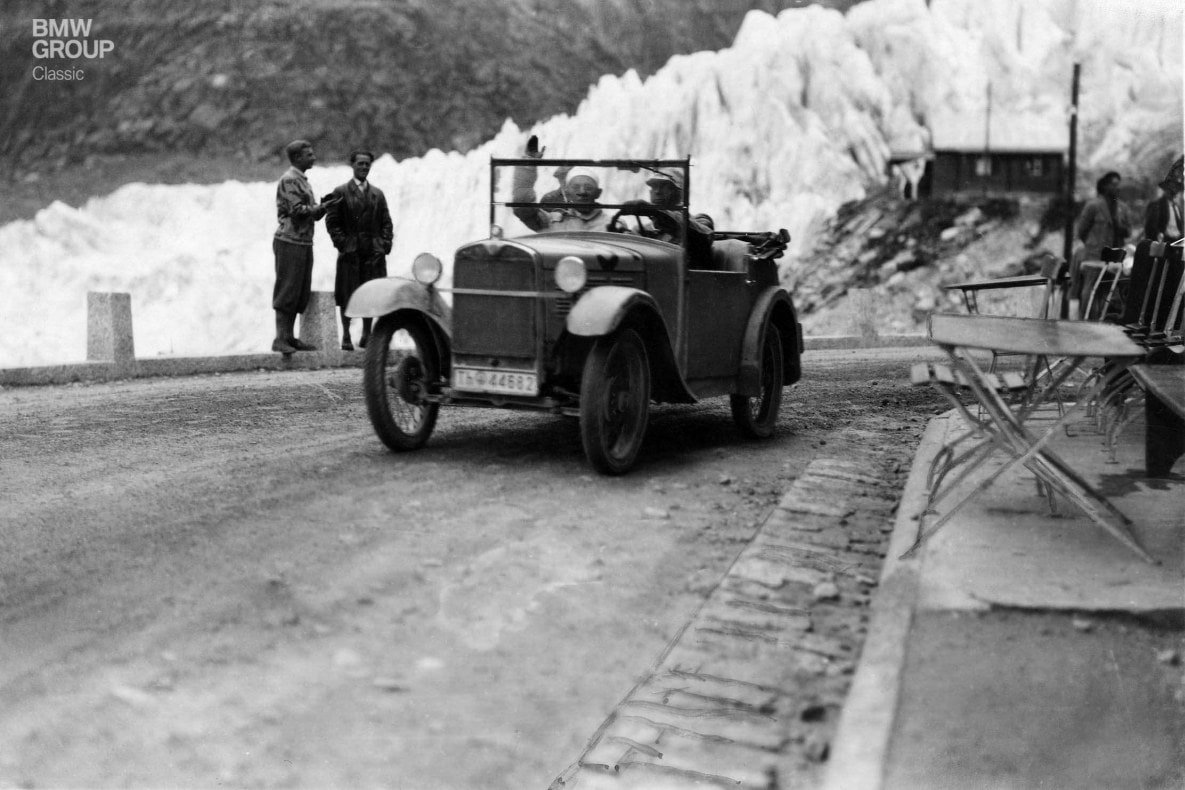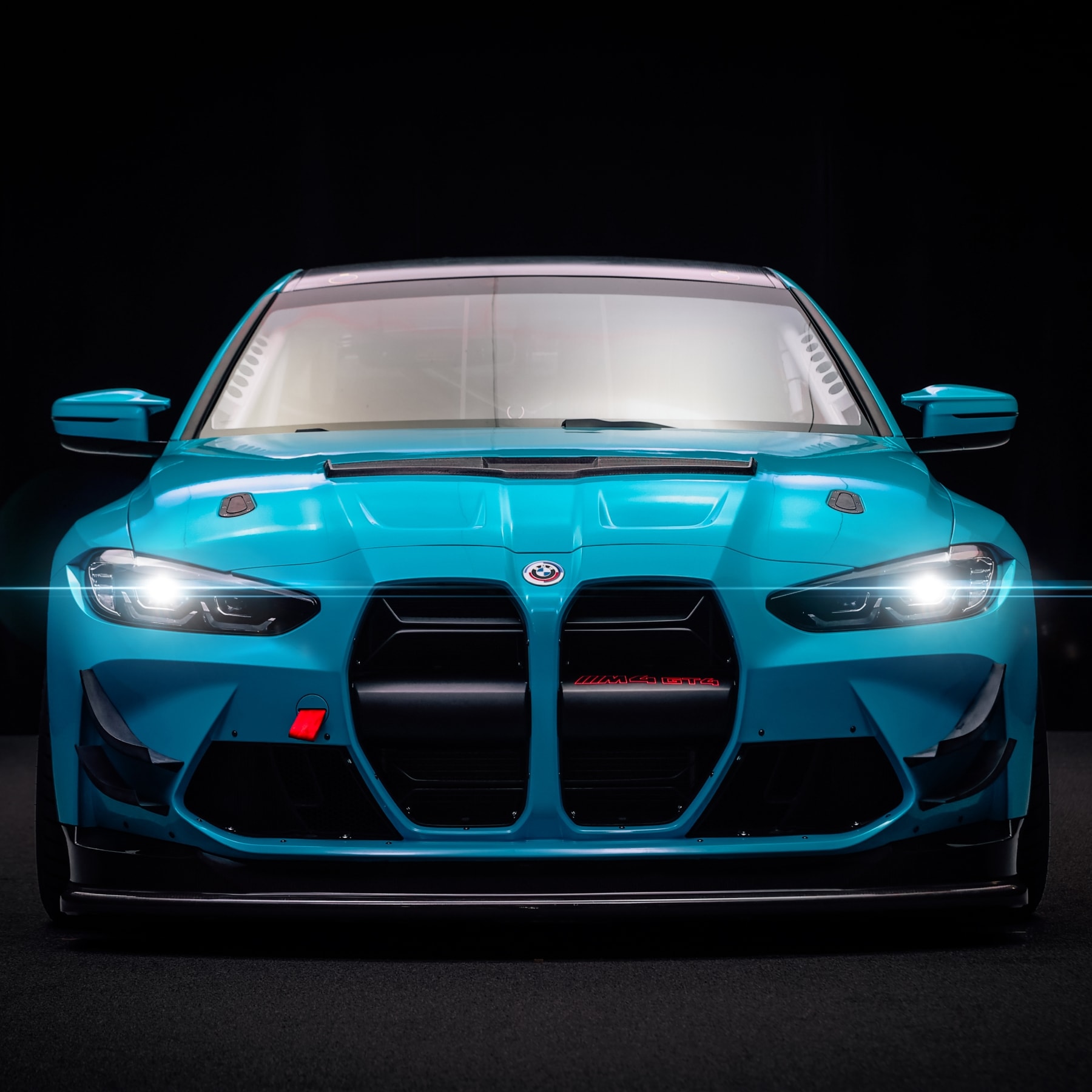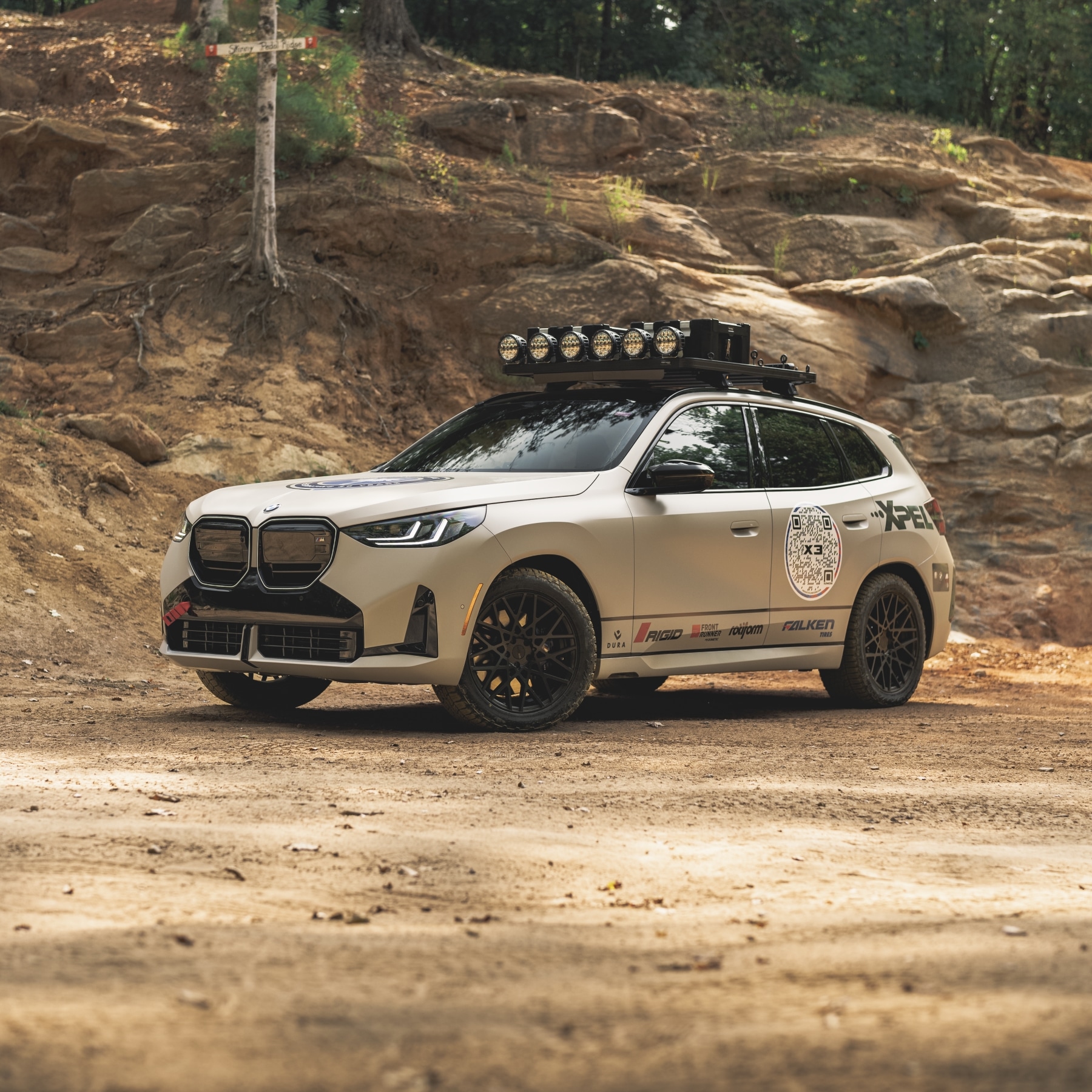“Aufmüpfig”, which translates roughly as bolshy, was the word of the year 1972 in Germany. “Rebellious” would have been a better match from the point of view of motorsports history. Because in the same year, an equipe was founded that developed legendary vehicles much more quickly than expected and won sensational races. It was the founding year of BMW Motorsport GmbH and the start of an unprecedented motor racing history.
1972: A RACE-PROVEN TEAM BECOMES BMW MOTORSPORT GMBH.

1972: A RACE-PROVEN TEAM BECOMES BMW MOTORSPORT GMBH.
Jochen Neerpasch, former works driver for Porsche and Head of Racing at Ford in Cologne before they moved to Munich, was signed as boss of the 35-person team of specialists. With him went a group of racing drivers who would leave their mark on BMW Motorsport over decades: Chris Amon, Toine Hezemans, Hans-Joachim Stuck and Dieter Quester.

The young company was soon able to move into its own quarters close to the main factory in Munich’s Preußenstraße. Here the sports cars for the year 1973 were created: A 950kg-lightweight-2002 with a two-litre four-valve four-cylinder for rallying. And a new touring car coupé about which Jochen Neerpasch said: “As we see 1973 as a development year, we don’t also see ourselves winning the European championship.” It turned out he was wrong, as the motorsport successes of the BMW 3.0 CSL impressively proved. Already in the first year, Toine Hezemans won the European Touring Car Championship and the 3.0 CSL became the legendary racing car of its time.
MOTORSPORT AS THE DNA FOR BMW M AUTOMOBILES.
Motor racing has been anchored in the DNA of BMW M ever since. Regardless of which series or period you look at, a BMW M has always meant pure dynamics, power and victories. In the meantime, many icons of motorsport have been created. The Formula 1 performance king is the BMW BT52 racing car, in which Nelson Piquet became world champion in 1983. But the Brabham with BMW Power is just one of many examples of the most successful racing car in all classes.
Thus, icons like the V12 LMR, the 3.0 CSL, the M3 E30, the M3 E46 GTR and many others set new standards at the Le Mans 24 Hours and the internationally contested touring car championships.
MILESTONES – BMW M MOTORSPORT:
- 1972: Founding
- 1973: Winner European Touring Car Championship (BMW 3.0 CSL/T. Hezemans)
- 1973: Winner 6h of the Nürburgring (BMW 3.0 CSL/H. Stuck, C. Amon)
- 1976: Winner 24h Daytona (BMW 3.5 CSL/P. Gregg, B. Redman, J. Fitzpatrick)
- 1983: Winner Formula 1 World Championship (Brabham BMW BT52/N. Piquet)
- 1987: Winner World Touring Car Championship (BMW M3/R. Ravaglia)
- 1987: Winner European Touring Car Championship (BMW M3/W. Vogt)
- 1989: Winner DTM (BMW M3/R. Ravaglia)
- 1999: Winner 24h of Le Mans (BMW V12 LMR/Y. Dalmas, P. Martini, J. Winkelhock)
- 2001: Winner ALMS-GT/USA (BMW M3 GTR J. Müller, JJ Lehto among others)
- 2012: Winner DTM (BMW M3 DTM/B. Spengler)
- 2014: Winner DTM (BMW M4 DTM/M. Wittmann)
- 2016: Winner DTM (BMW M4 DTM/M. Wittmann)
- 2018: Winner FIA GT World Cup (BMW M6 GT3/A. Farfus)
- 2022: Winner DTM (BMW M4 GT3/S. van der Linde)
- 1965–2023: A total of 45 victories at the two major 24-hour races in Spa and at the Nürburgring
The philosophy of M GmbH plays a large part in the company’s motorsport success. Former board member Robert A. Lutz described it most appositely in the year the BMW subsidiary was founded:

A company is like a human. If it does sports, it will be fit, enthusiastic and perform better.
Five decades later, nothing has changed. The company, now known as BMW M GmbH, is more than ever a byword for its ideals – and can look back on an impressive history full of enthusiasm, passion and success.
To achieve the status of motorsports legend, titles, prizes and successes alone are not enough. What you need to remain in people’s memories for ever is above all the passion and the enthusiasm of the developers, drivers and last but not least the spectators. A short journey back in time shows the moments when these BMW M models became legends of motor racing history.

LEGENDS OF MOTORSPORT:
- 1973: BMW 3.0 CSL
- 1979: BMW M1 Procar
- 1983: Brabham BMW BT 52
- 1987: BMW M3 E30 DTM
- 1999: BMW V12 LMR
- 2000: BMW Williams FW22
- 2001: BMW M3 GTR E46
- 2010: BMW M3 GT E92
- 2012: BMW M3 E92 DTM
- 2014: BMW M4 F82 DTM
- 2016: BMW M6 GT3 F13
- 2019: BMW M8 GTE
BMW 3.0 CSL: THE FIRST „REAL M“.

BMW 3.0 CSL: THE FIRST „REAL M“.
The BMW 3.0 CSL really earned its reputation as one of the most iconic BMW motorsport vehicles. From 1973 to 1979, the coupé was the car to beat in almost every touring car championship – including the ETCC (European Touring Car Championship). The title of “first real M” can be traced back to its influence on the founding of BMW motorsport GmbH. Although the BMW 3.0 CSL was planned in the central motorsport department of BMW, development and production required new standards. The creation of BMW Motorsport GmbH was the perfect solution and the start of a great company history. A purebred racing car was created which had up to 440 hp, accelerated to 100 km/h in 4.0 seconds and whose top speed was 275 km/h. For the time, the stuff of dreams.
The stories and successes of the drivers of the 3.0 CSL are also legendary. Swede Ronnie Peterson could scarcely believe the rear wheelspin – at 250 km/h. Another motorsports legend was persuaded by the power of the first BMW M: together with Chris Amon, Hans-Joachim Stuck won the 6 Hours of the Nürburgring in the 3.0 CSL’s first outing at the event. And the coupé convinced Stuck not only on the Nordschleife, but away from the racetrack too he was often seen in his private 3.0 CSL.
The BMW E9, the base model of the 3.0 CSL, still emanates unmistakeable motorsport charm today and is a legend of sports car history.
5 FACTS:
- Base: BMW E9
- Period of production: 1973–1975
- 6-cylinder inline engine
- Displacement: 3,498 cm³
- Max. output: 324 kW (440 hp)
BMW M1 PROCAR: THE FORMULA 1 ATTRACTION.
Scarcely a BMW caused more of a stir when it first rolled out of the assembly hall than the BMW M1. With the M1, BMW had one of the most exclusive sports cars on and off the racetrack. And the M1 convinced most of all with its power. With its top speed of 264.7 km/h, the M1 was holder of the record for fastest production sports car in Germany for eight long years – nowadays, such a long period would be unthinkable.

In particular, the Procar series, the spectacular support series of Formula 1, made the M1 not only the fans’ favourite, but also that of the drivers. The field, consisting of privateers, well-known pros, new talents and the five fastest Formula 1 drivers from the weekend’s qualifying heats ensured excitement and made the Procar series unique – right down to the first prize of the unofficial brand trophy: a street version of the BMW M1, which was highly desired by the world’s best drivers and thus fiercely contested.
In the first year, it was Formula 1 world champion Niki Lauda who won overall victory and thus earned himself one of the rare street cars. The following season, it was Brazilian Nelson Piquet who won the Procar series with three back-to-back victories and was allowed to take the M1 home. Three years later, Piquet was the first driver who won the premium competition with a BMW turbo engine.
5 FACTS:
- Base: BMW M1 E26
- Period of production: 1978–1981
- 6-cylinder inline engine (mid-engine)
- Displacement: 3,500 cm³
- Max. output: 346 kW (470 hp)


BRABHAM BMW TURBO BT52: WORLD CHAMPION AFTER JUST 630 DAYS.
On the 24th April 1980, BMW announced they were entering formula sport. Paul Rosche constructed the first F1 engine for the Bavarians, a four-cylinder inline engine block with 1.5 litres capacity. With special fuel and an exhaust-driven turbo-charger, the engine first had an output of 630 hp and in later years up to 1,400 hp. On 23rd January 1982, Nelson Piquet and Riccardo Patrese opened the season in Kyalami in the Brabham BMW’s first outing. The first Formula 1 points were captured by the BMW-engined Brabham shortly afterwards: On 9th May 1982, Nelson Piquet finished fifth in the GP of Belgium. The Brazilian clinched the first victory on 13th June in Montreal.
For the world championship 1983, the BMW turbo engine was further optimized. With success: Nelson Piquet won the opening race in São Paulo. The quality of the engine had got about and thus for the first time a third BMW Turbo customer was on the grid: Manfred Winkelhock in the ATS BMW.
From BMW’s point of view, the fight for the first world championship couldn’t have been more exciting. From the first victory, it took twelve races for Piquet to win again. From then on, he drove consistently and collected points. And in Monza and Brands Hatch, Nelson Piquet and his Brabham BMW crossed the line first.
At the season finale in Kyalami, third place was enough for the championship. After only 630 days in Formula 1 for BMW Motorsport GmbH, Nelson Piquet was world champion – and the BMW turbo engine was the engine to beat in future.
5 FACTS:
- Base: Brabham BT52 (BMW Turbo motor M12/13)
- Period of production: 1983
- 4-cylinder inline engine with turbocharger
- Displacement: 1,500 cm³
- Continuous output: 463-581 kW (630-790 hp)

BMW M3 (E30) GROUP A: FROM ZERO TO HERO.
The first BMW M3 (E30) is an absolute collector’s item and not only from an historical point of view a real milestone for BMW M. With a total of more than 1,400 race wins and numerous championship titles in almost every conceivable series right up to the world championship, the BMW M3 E30 is still the most successful touring car in the world today.
The M3 was a born winner. As in the motto “From zero to hero”, the E30 managed several championship wins in its first year, with Eric van de Poele, driver of the serial winner M3, taking the DTM title at his first attempt.

In the same year, the newly created touring car world championship saw an unbeatable pairing with Roberto Ravaglia at the wheel of his M3. The result: the championship win.
The successors to the M3 E30, for example the M3 E36 GTR and the M3 E46 GTR, took up the baton without missing a stride. Thus the M3 models continued to ratchet up performance levels in motorsport and thus also the field of homologated street vehicles.
As one of the sportiest BMW M vehicles, the M3 is thus not only class founder and constant benchmark, but also an eternal icon.
5 FACTS:
- Base: BMW M3 E30
- Period of production: 1987–1992
- 4-cylinder inline engine
- Displacement: 2,332-2,493 cm³
- Max. output: 220-257 kW (300-350 hp)

BMW V12 LMR: ROBUST AND FAST.
The Le Mans 24 Hours is one of the hardest tests for both driver and material. To win this competition was for BMW M not only a challenge, but also a vision, one that became reality in 1999. The completely newly developed BMW V12 LMR (Le Mans Roadster) prototype with its powerful V12 engine and an curb weight of just 915 kg was a futuristic vehicle of the highest class.
The six-litre engine was more durable and robust than the competition. The engine’s enormous durability was thanks to the benchmark set during development. The standard expected of the developers was to survive a race twice as long as Le Mans.

With their victory at the Le Mans 24 Hours, the international driver team of Joachim Winkelhock, Yannick Dalmas and Pierluigi Martini realized a dream shared by many racing drivers. Crossing the finish line was the ideal end to a perfect race, in which the car, the drivers and the whole team had worked at the highest level of efficiency and with maximum precision, recalls Dalmas.
5 FACTS:
- Base: newly developed
- Period of production: 1999
- 12-cylinder V-engine
- Displacement: 5,990.5 cm³
- Max. output: 427 kW (580 hp)


WILLIAMS BMW FW22: A SUCCESSFUL RETURN TO FORMULA 1.
BMW announced its re-entry into Formula 1 at the IAA in September 1997. This news caused great joy among motorsport enthusiasts and the first test drives began again at Miramas on 27. April. At the unveiling of the FW22 racing car at the Circuit de Catalunya in January 2000, Williams’ chief designer Gavin Fisher declared the collaboration with BMW to be the beginning of a "new era" and expressed his confidence in the car as it represented "a significant step forward."
In fact, the 2000 premiere season began with a bang. Ralf Schumacher's third place at the opening race in Melbourne, Australia, meant that this was the most successful premiere of an engine manufacturer since 1967. The rest of the season also marked a successful re-entry into the top class of motorsport for BMW with Team BMW Williams finishing third in the constructors' championship on their first attempt.

The end result was respectable with a number of individual successes in the world's highest and most demanding motorsport class – four Grand Prix victories in the 2001 season, plus the Constructors' World Championship runner-up in 2002 and 2003. At this point, the engine, that was constantly being improved with its internal designation P82 was producing more than 900 hp at over 19,000 rpm. This increase in power when compared to the first engine version was due to the BMW M engineers' constant search for the tiniest improvements.
5 FACTS:
- Base: Williams FW21 (BMW engine E41)
- Period of production: 2000–2005 (FW22 to FW27)
- Natural aspirated V10 with 2.998 cc displacement
- Max. output: 559–604 kW (750–810 PS)
- Top speed: approx. 355 km/h

BMW M3 GTR E46: DESIGNED AS A WINNER.
Sometimes everything just comes together as it should. This was the case with the development and construction of the BMW M3 GTR at the beginning of the new millennium. The goal was to put the competitors in the potent American Le Mans Series (ALMS) in their place. This was achieved thanks in part to the 460 hp of the all-aluminium naturally aspirated V8 engine with four overhead camshafts, chain drive and mechanical bucket tappets. This superior engine catapulted the racing car into a league of its own. The M3 GTR won seven out of ten races in the ALMS GT class in its debut season.
So, the decision to go for a compact V-engine paid off. It made use of an improved cooling concept, which brought thermal and aerodynamic advantages. The unmistakable rear wheel arches and the huge rear wing played their part in the success too- and also contributed to the memories of the most extreme M3.

Not only the drivers' title, but also the constructors' and team championships went to BMW Motorsport in the end. Title winner Jörg Müller was no stranger to the event. He had already won in the BMW V12 LMR together with JJ Lehto in Sebring/USA in 1999. In the ALMS, the Finn finished second in the drivers' standings behind Müller.
In order to be allowed to participate in the prestigious racing series at all, an entirely different kind of hurdle had to be cleared beforehand. The regulations stipulated that the respective engine had to be used in the production version. This resulted in ten BMW M3 GTRs being created as a street legal version with a slightly more civilian friendly design where 350 hp was still sufficient for almost 300 km/h.

The 100 homologated models required for the road the following year meant the end of racing for the M3 GTR. But the one year in the ALMS was enough to immortalise itself in the annals of motorsport.
Successful revivals in Europe, such as the two double victories at the Nordschleife classic, the 24 Hours of Nürburgring, in 2004 and 2005, have since revived the almost untamable power of this fireball of a car in the years after.
5 FACTS:
- Base: BMW M3 E46
- Period of production: 2001
- Natural aspirated V8 engine
- Displacement: 3,997 cc
- Continuous output: 330 kW (460 hp)
BMW M3 DTM E92: A PERFECT COMEBACK.
It was almost as if the 20-year break had never happened. After the end of BMW Motorsport's involvement in Formula 1 in 2009, the decision was made to enter an M3 in the Deutsche Tourenwagen Meisterschaft (DTM) again from 2012. Before that, he last time an M3 E30 from a BMW works team competed in the DTM was in 1992. Based on the then current E92 model, the engineers once again created a vehicle that couldn’t help but win.
Unlike its predecessor in the DTM, the new M3 was developed exclusively for use in this racing series. Air restrictors capped the maximum output of the naturally aspirated V8 with four litres of displacement at 480 hp. The framework for the overall construction was provided by the CFRP monocoque chassis in line with the regulations. In the end, acceleration from zero to 100 km/h was possible in about three seconds.

With Canadian Bruno Spengler at the wheel, the first victory of the demanding race series, renamed the Deutsche Tourenwagen Masters (German Touring Car Masters), came in the second race of the season at the Lausitzring. In the end, Spengler won the title as well as the manufacturers' and team championships, making it a triple success. The second driver for BMW Team Schnitzer was Dirk Werner. The team thus gave itself the greatest gift ever for the 40th anniversary of BMW M.
20 years after its last start, BMW Motorsport managed to take the highest place on the podium in the first attempt with the new M3 DTM E92.It was the perfect comeback, with which this M3 that was created for the racetrack also wrote itself into the history books of motorsport.
5 FACTS:
- Base: Prototype; based on BMW M3 E92
- Period of production: 2012–2013
- Naturally aspirated V8 engine with air restrictor and 3,999 cc displacement
- Continuous output: 353 kW (480 hp)
- Top speed: approx. 300 km/h

BMW M4 DTM F82: SEAMLESS TRANSITION.
The BMW M4 DTM had big shoes to fill. But the engineers at BMW Motorsport immediately hit the bull's eye with its successor. Visually, the bodywork was based on the BMW M4, which had just been presented at the time, while the familiar naturally aspirated V8 engine with 480 hp was used again and was perfectly tuned to the chassis and aerodynamics in time for the 2014 season.

Marco Wittmann, who had switched to the RMG team, won the very first race. Victories followed in Hungary, Austria and at the Nürburgring - Wittmann and his M4 DTM literally left their competitors in their wake. The points difference was so large that a sixth place in the third-last race of the season was enough for overall victory. As a result, he became the youngest title winner of this competition at the time.
In 2015, BMW M secured another important trophy with the title for the most successful manufacturer. That was before Marco Wittmann ended up on top in 2016 for the second time in three years - and he has since joined the ranks of memorable winners in this highly regarded racing series together with the BMW M4 DTM.
5 FACTS:
- Base: Prototype; based on BMW M4 F82
- Period of production: 2014–2018
- Naturally aspirated V8 engine with air restrictor and 3,999 cc displacement
- Continuous output: 353 kW (480 hp)
- Weight: 1,120 kg (including driver)


BMW M6 GT3 F13: THE GT-FLAGSHIP.
One size bigger, the BMW M replaced the BMW Z4 GT3 with the GT3 version of the M6 F13 for the 2016 season. From 2010, until its replacement, this was the first choice for various private racing teams worldwide and initially produced 480 and later up to 535 hp. Its greatest success came in 2015 when it won the 24-hour race in Spa-Francorchamps.
Nevertheless, with its relatively short wheelbase of 2,509 millimetres, the Z4 GT3 was always more challenging to handle than its competitors. BMW Motorsport ultimately decided to rely on the BMW F13 from now on. This was “perfect for the development of the new GT sports car for customer sport”, explained BMW Motorsport Director Jens Marquardt at his presentation at the IAA 2015. The almost five-metre-long racing car was to be used in various series in accordance with the FIA GT3 classification.
The turbocharged V8 engine and the long wheelbase were the basis for optimal handling, which gave the series vehicle a sporty look. Nevertheless, the modifications compared to the series models were plentiful, especially the radical change from over 1,900kg to under 1,300 kg, the driver's seat shifted to the centre, the transaxle transmission and a power increase of the series engine to 585 hp.

The first successes were not long in coming. A victory in the VLN Endurance Race Nürburgring was followed by first place in the 24 Hours of Spa-Francorchamps. In 2018, Walkenhorst Motorsport took its second overall victory at Spa-Francorchamps and Augusto Farfus won the FIA GT World Cup title for Schnitzer Motorsport in Macau. In 2020, ROWE Racing achieved the long-awaited overall victory at the Nürburgring 24 Hours with the BMW M6 GT3. Its victories on the international stage once again underlined the broad and varied expertise of the M - and this was therefore another important chapter in recent motorsport history.
Along with its sporting successes, the M6 GT3 also received the rare honour of twice becoming a work of art in the BMW Art Car Collection.
5 FACTS:
- Base: BMW M6 F13
- Period of production: 2016–2021
- V8 biturbo with 4,395 cc displacement
- Continuous output: 430 kW (585 hp)
- Net price for customer sport: 379,000 euros (2016)
BMW UND MOTORSPORT: ALMOST A HUNDRED YEARS OF HISTORY.
BMW means motorsport – from the very start. Way back in 1929, the first 3/15 DA 2 left the factory in Eisenach and turned out to be the ideal basis for a sports car. In the same year, the BMW 3/15 DA 2 made history by taking part in its first official competition.
The endurance race in which BMW came to the world’s attention for the first time would still be an enormous challenge by today’s standards. The famous Austrian Alpine Rally lasted five days and covered 2,650 km over countless mountain passes. The first BMW in the Austrian Alpine Rally in 1929 was piloted by Max Buchner, Albert Kandt and Wilhelm Wagner.
At the time, both team and vehicle were completely unknown, yet they managed to achieve a sensation: A maiden start became a maiden victory. With an average speed of 42 km/h, fastest times in all stages and being the only team to avoid penalty points, BMW shocked the entire automotive world. The car publication Deutsche Automobilzeitung reported: “At one stroke, the new BMW presented itself to the whole world.”

The BMW newcomers quickly became a sensation. And the basic strategy of using the experience gained in racing for the development of street vehicles was born. Already in 1930, this was realized in the form of the BMW 3/15 Wartburg Roadster. The model contained an engine with higher compression than the basic BMW 3/15 and had 3 hp more. This vehicle was also successful in many races.
Thus, the foundations for the success of the BMW marque were laid, a marque which has been closely connected to motorsport ever since.
5 FACTS:
- Base: BMW 3/15
- Period of production: 1929–1932
- 4-cylinder inline engine with 750 cc displacement
- Max. output: 11 kW (15 hp)
- Top speed: 75 km/h

